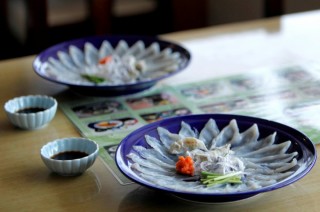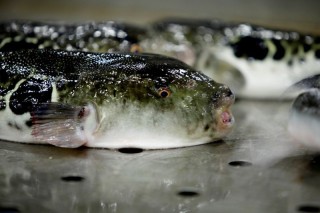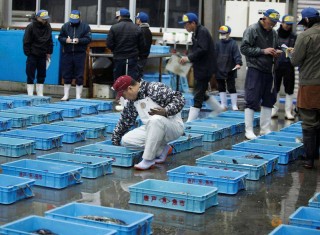Loading
Search
▼ Japan's Deadly Fish: Fugu Purveyors Dream Of Olympic Revival
- Category:Event
TOKYO: In the kitchen at Fukudokoro Sakai, a restaurant across the road from a seafood market at the southern tip of the main island of Japan, the chef casually hacks off the head of a live pufferfish.
He skins and guts it while its heart still beats, deftly removing the poisonous parts and tossing them into a bucket on the floor for disposal.
The meat of the fish, stained with blood, will be cleaned and cut into thin, semi-translucent sashimi slices and arranged into a chrysanthemum shape for customers to eat for lunch.
But the poisonous parts – which include the eyes and the liver – are what puts the otherwise nondescript fish in the spotlight. Those bits contain tetrodotoxin, which can kill an adult in hours and for which there is no known antidote.
The pufferfish gets occasional bad press for its toxicity, but it's the bland taste and big price tag that have been instrumental in hurting the fish's popularity in Japan, with 3.4 billion yen (US$30.6 million) worth sold in 2017 compared with 5 billion yen in 2007.
But fugu-focused restaurants hope the Olympics, and the hordes of tourists they will bring, will revive business.
Hajime Sakai, president of the wholesaler Sakai Shoten, which owns Fukudokoro Sakai, has tried to cultivate demand for the fish with online shipments and cute pufferfish ornaments.
This year he has his eyes on the Tokyo 2020 Olympics.
"I really hope (tourists) would come to Shimonoseki, try the pufferfish, and go back wondering why they can't try this fish back in their respective countries as well," Sakai said.
But fugu-focused restaurants hope the Olympics, and the hordes of tourists they will bring, will revive business.
Hajime Sakai, president of the wholesaler Sakai Shoten, which owns Fukudokoro Sakai, has tried to cultivate demand for the fish with online shipments and cute pufferfish ornaments.
This year he has his eyes on the Tokyo 2020 Olympics.
"I really hope (tourists) would come to Shimonoseki, try the pufferfish, and go back wondering why they can't try this fish back in their respective countries as well," Sakai said.
In Tokyo, Yukihiro Furukawa owns a restaurant in the ritzy district of Ginza, where courses that go for 30,000 yen (US$273) a head include a sashimi plate with pufferfish slices arranged in the shape of a dragon.
Furukawa, who is also the president of International Fugu Association, said wealthy tourists were a big part of his market.
"I would say that during peak season roughly 60 per cent of my customers come from abroad," he said. "We're basically going through an overseas tourist bubble right now."
He said that although COVID-19 might put a damper on a tourist influx at the Olympics, "we'll eventually be looking to take this battle for more markets abroad in the near future."
The fish's meat is chewy and bland, although there is a hint of sweetness if chewed long enough. Alongside the toxicity, that makes it difficult to export as a food for everyday consumption, experts say.
Furukawa, who is also the president of International Fugu Association, said wealthy tourists were a big part of his market.
"I would say that during peak season roughly 60 per cent of my customers come from abroad," he said. "We're basically going through an overseas tourist bubble right now."
He said that although COVID-19 might put a damper on a tourist influx at the Olympics, "we'll eventually be looking to take this battle for more markets abroad in the near future."
The fish's meat is chewy and bland, although there is a hint of sweetness if chewed long enough. Alongside the toxicity, that makes it difficult to export as a food for everyday consumption, experts say.

"One thing about the pufferfish is that it's not really just about the fish itself," said Masaaki Sano, a professor of seafood distribution at Kagoshima University. "It's about the skill of the chef who cuts it, the presentation … it's a delicate cuisine – that's the point."
- February 20, 2020
- Comment (0)
- Trackback(0)




